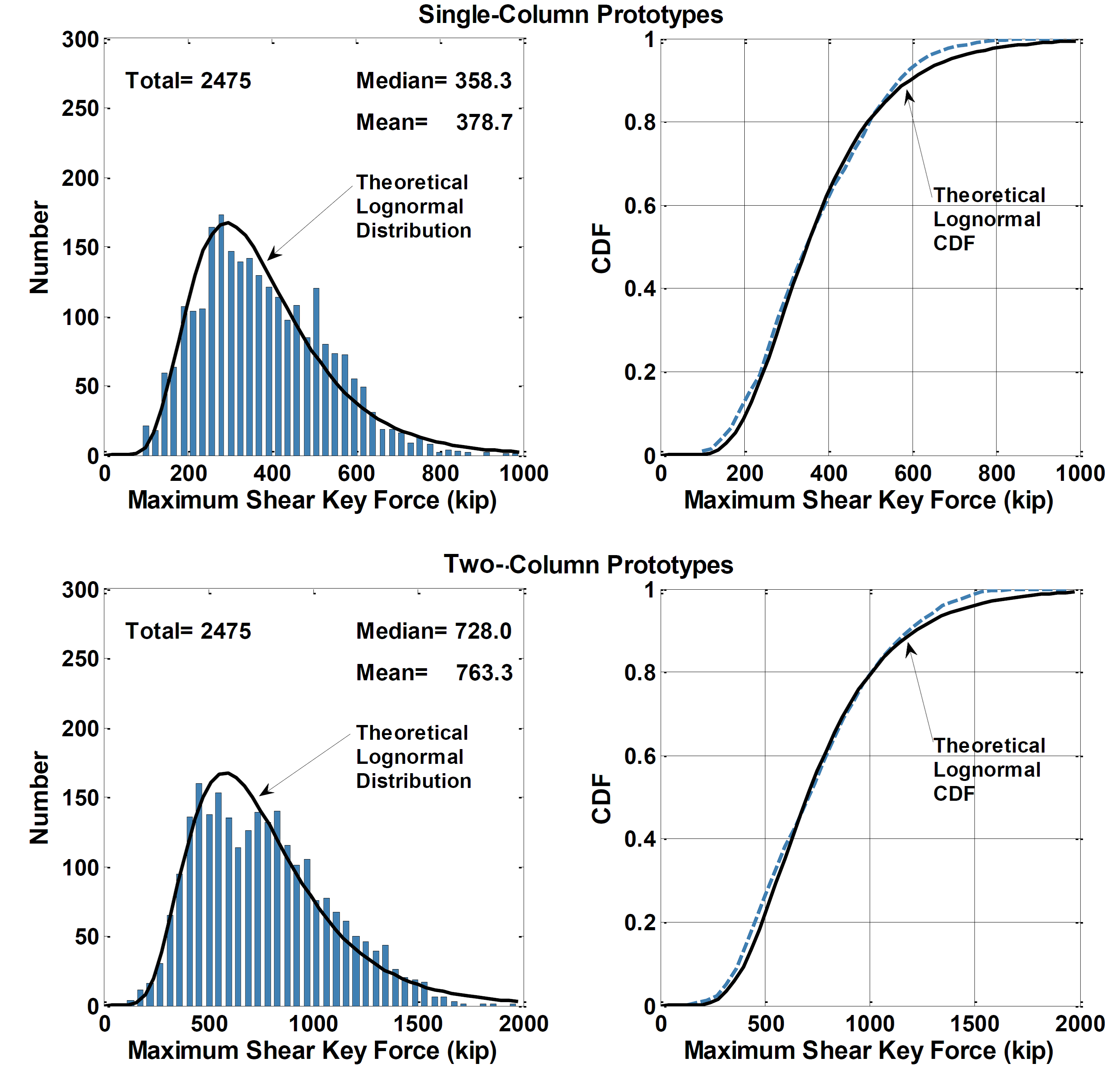Development of a Rational Design Method for Shear Keys at In-Span Hinges in Multi-Frame Highway Bridges
Development of a Rational Design Method for Shear Keys at In-Span Hinges in Multi-Frame Highway Bridges (PI)
Funded by: California Department of Transportation (Caltrans)
Date: July 2012 to June 2014
Final Project Report, Part I
Final Project Report, Part II
Long concrete box-girder bridges are often constructed in multiple frames separated by in-span hinges in their superstructure. Shear key members are placed at in-span hinges to connect adjacent frames in transverse direction, while allowing for the longitudinal relative movement of the frames. The shear keys ensure seismic integrity of the frames. Seismic transverse response of multi-frame bridges has not been comprehensively studied. No reliable method exists for estimating the design force demands of in-span shear key elements. In this study, OpenSees simulation tool was used to conduct approximately 7,700 nonlinear response history analyses on high-fidelity models of two-, three-, four-, and five-frame bridges with single-column and two-column bents and different valley shapes. These prototypes were carefully designed in accordance to the Caltrans Seismic Design Criteria (SDC v1.7). The major findings of this study are: 1) higher in-plane modes of vibrations of superstructure significantly contribute to shear key force response; 2) the ratio of the periods of adjacent frames does not have a major effect on the magnitude of shear key forces; 3) transverse impacts, due to closure of gaps on the sides of shear keys, increase shear forces by an average factor of 2.5; 4) non-uniform ground motions along the bridge length may increase shear key forces by a factor of approximately 1.25; and 5) the maximum shear key force does not exceed the 75% of the transverse capacity of the weaker adjacent frame. It was established that modal shear key forces shall be modified separately by the corresponding modal displacement ductility values to account for the nonlinear behavior of the system. This concept enables reliable estimation of force demands of in-span shear key elements. It was used as a basis to develop an analysis methodology for obtaining the elastic shear force demands in multi-frame bridges.
The proposed project will include the following major tasks:
Task 1 – Develop the dynamic equation of transverse motion for multi-span bridges.
Task 2 – Generate suites of ARS matched ground acceleration histories.
Task 3 – Conduct nonlinear time history analysis on the prototype bridge models.
Task 4 – Develop design method and numerical examples.
Task 5 – Develop a novel detail for in-span shear keys.

Left) In-Span Hinge in a Highway Interchange, Oakland, California (Courtesy of Godden), top right) Interstate 580 connector, San Rafael (Hube & Mosalam, 2008), bottom right) Interstate 80 connector, Albany (Hube & Mosalam, 2008)

In-Span Hinge Configuration and Modeling Scheme

Distribution and CDF of Shear Key Forces from the Nonlinear Time History Analyses